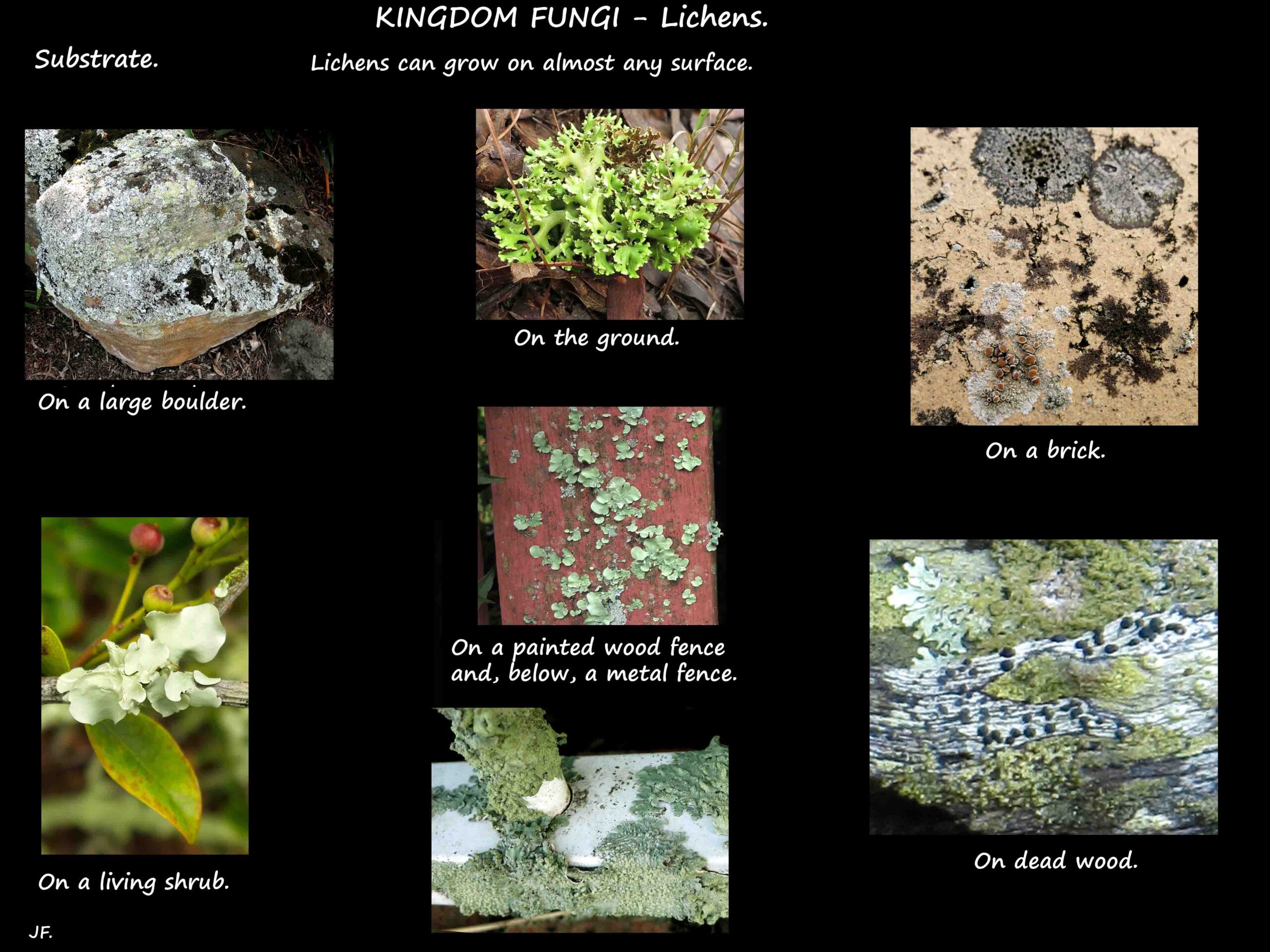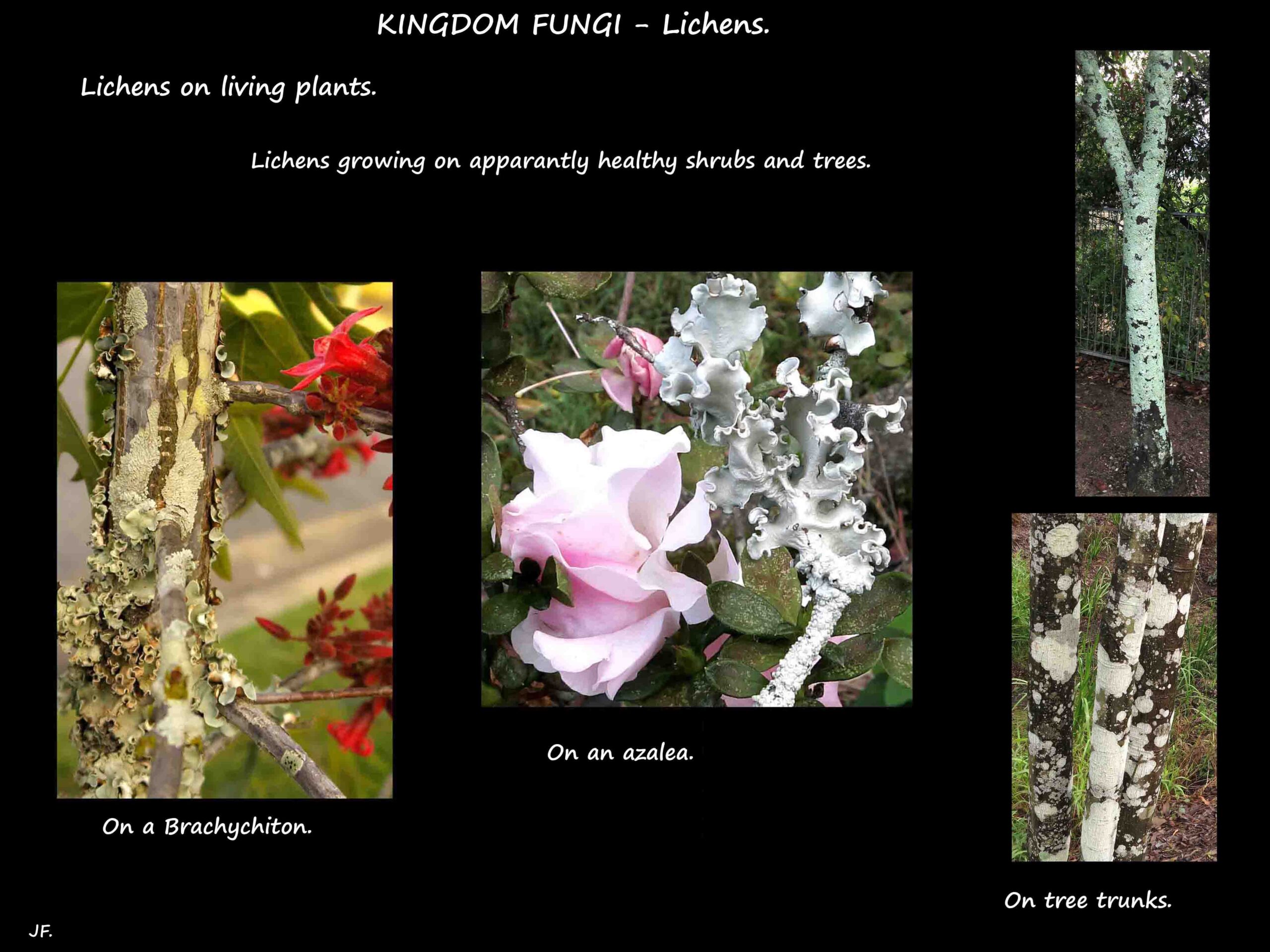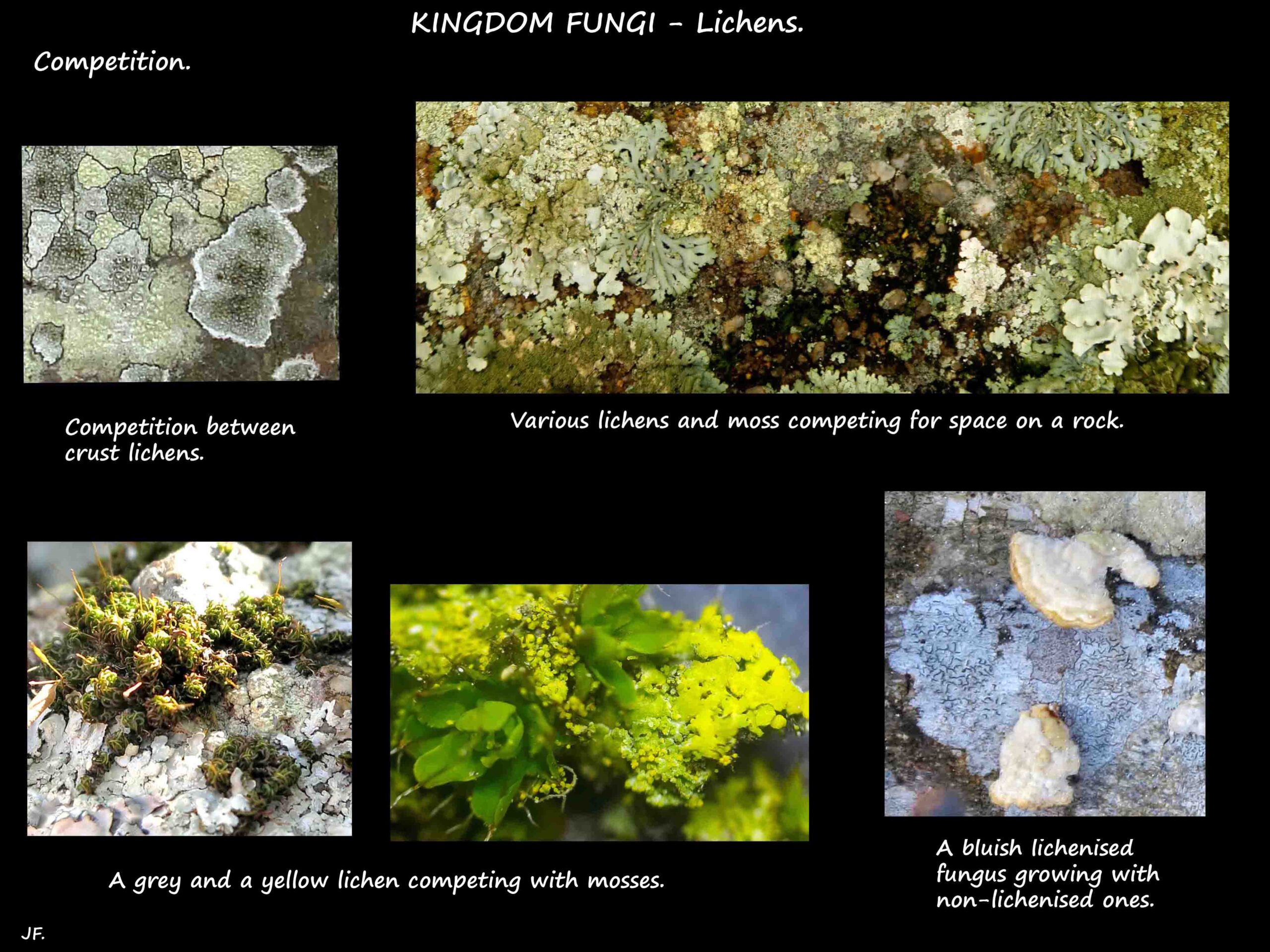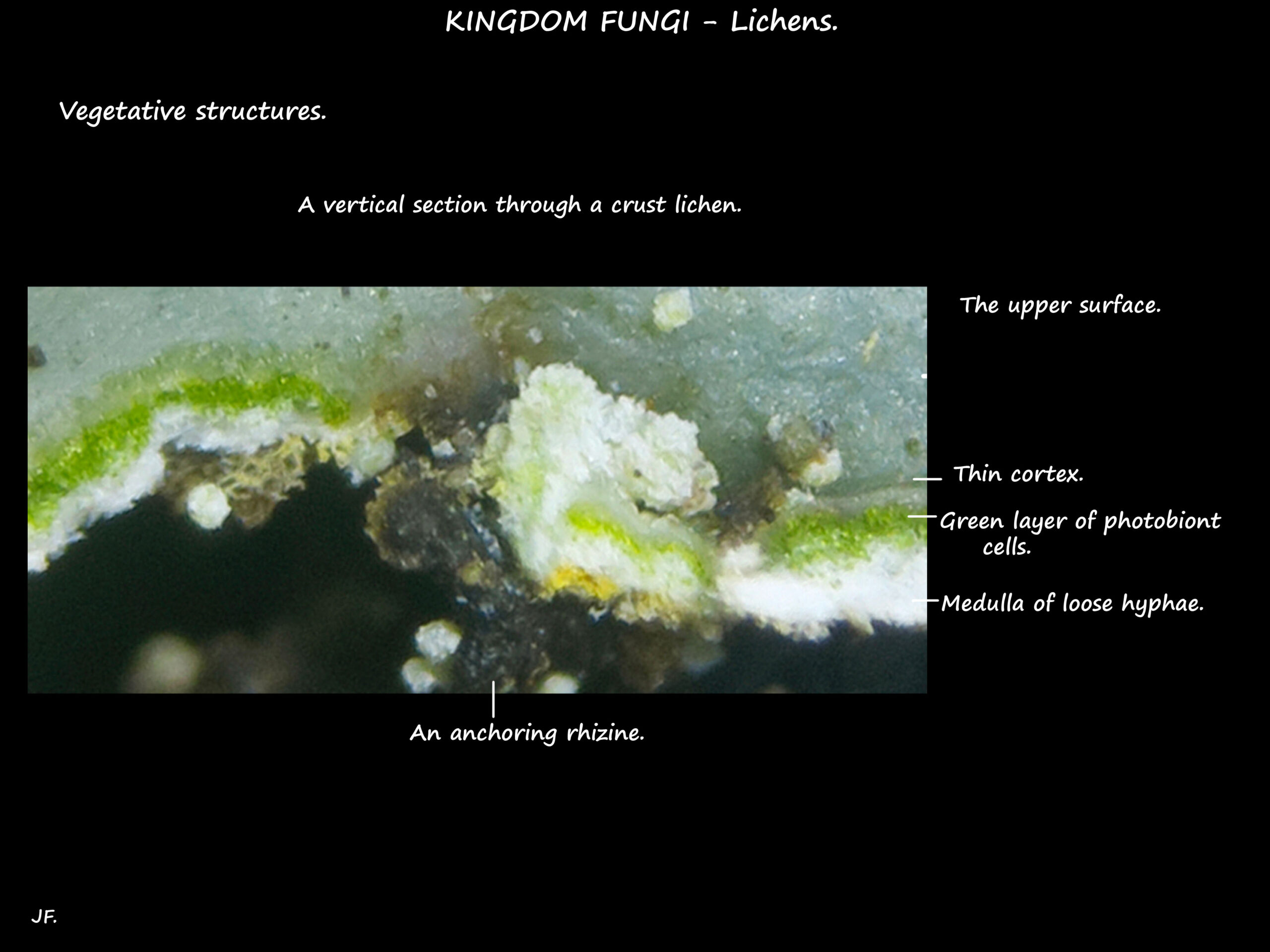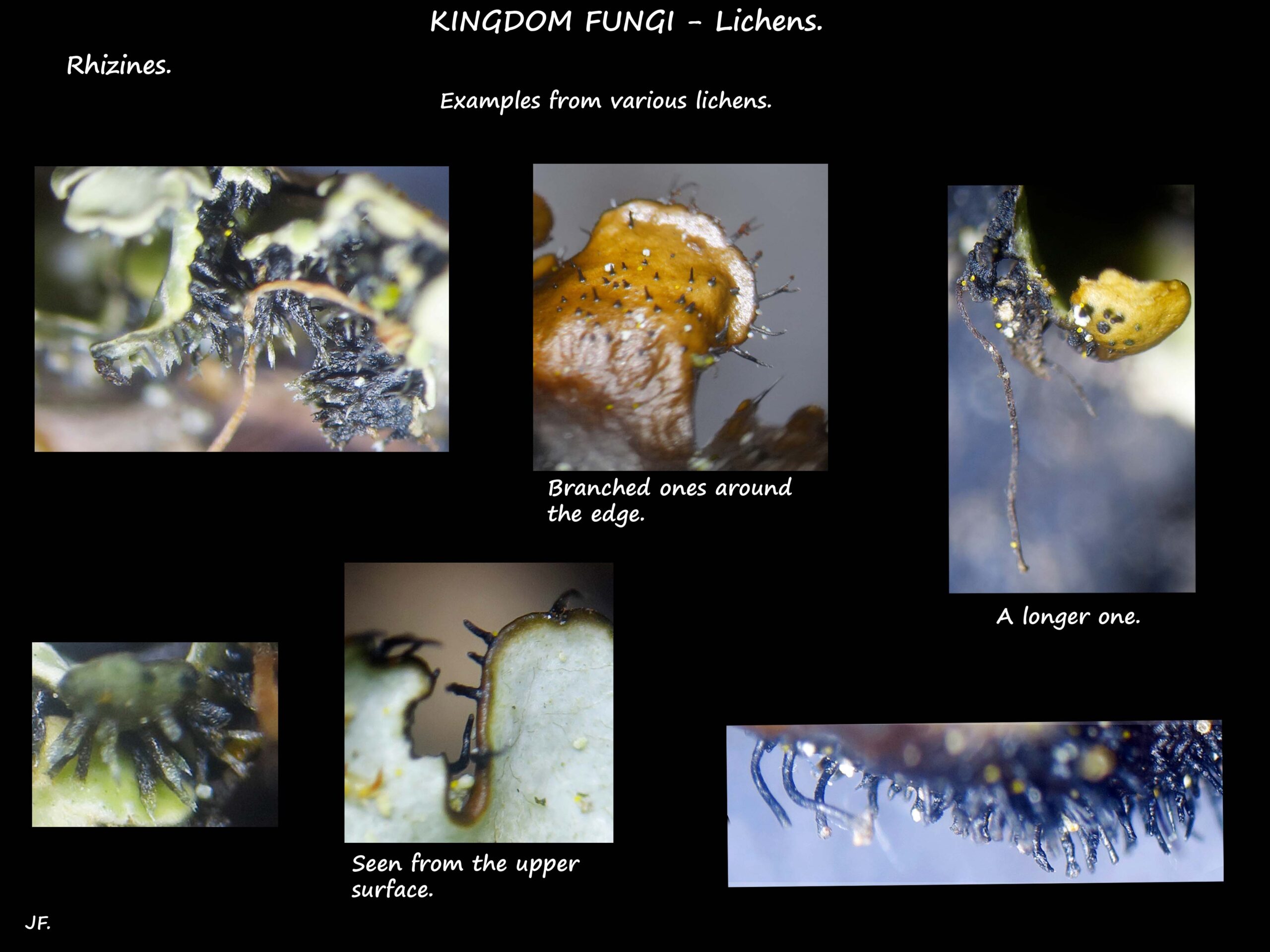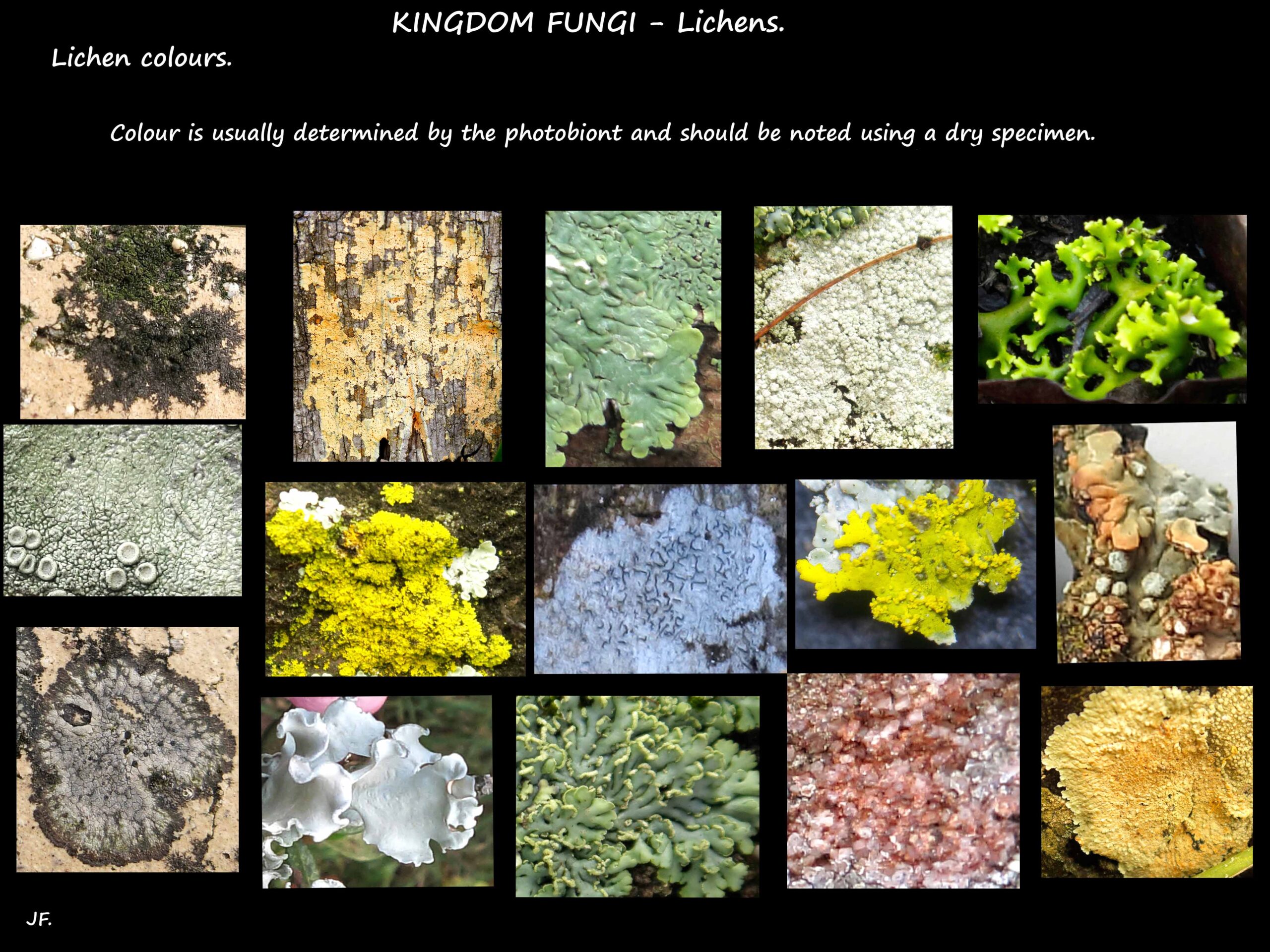What is a lichen?
A lichen is a symbiosis between a fungus (the mycobiont) and one or more algae &/or
cyanobacteria (the photobionts).
There are 18,000 to 20,000 known lichens with over 3,000 in Australia.
Most have an Ascomycete as the fungal component, often of the Lecanoromycetes group.
A few dozen lichens have a Basidiomycete as the fungal component.
Lichens are classified by the fungal component.
They possess structures, and manufacture chemicals, not found in either of the partners.
The fungi that form lichens do not occur in nature as independent organisms but a number of
the photobionts do, particularly the algae.
The fungi can dissolve minerals in the rocks and soil and the chlorophyll containing algae and
cyanobacteria can manufacture carbohydrates.
Lichens can grow on almost any surface whether natural or man-made.
Some lichen species can be identified with the naked eye but many need laboratory examination.
Lichens have been associated with trees and shrubs, herbs, grasses as well as ferns and mosses as long as
they have been around but there is no evidence to show that lichens cause any major problems to them.
Lichen rhizines can penetrate the bark of trees and shrubs to reach the wood and it is possible that
extensive lichen coverage could stunt their growth.
They are often found in the same areas as non-lichenised fungi and mosses.
Some lichens produce chemicals that can inhibit the growth of competitors.
Some crustose lichens are very effective in inhibiting the growth of competing mosses.
Vegetative structure of lichens.
Lichens consist of millions of algae between the hyphae of the fungus.
The thallus consists of vegetative hyphae and may have up to 4 layers.
Most have a cortex which is a layer of dense fungal hyphae forming a protective skin.
Below this is a continuous or patchy layer of photobiont cells either green (algae) or blue-green (cyanobacteria).
Below this is the medulla of loose hyphae.
Some species have a basal hypothallus visible around the growing edge.
Bundles of hyphae (rhizines) grow into the substrate to anchor the thallus.
In some species hyphae grow out from the cortex giving it a sparse or densely hairy appearance.
The surface may be cracked in various patterns and to various degrees.
Rhizines.
Rhizines are bundles of hyphae growing from the lower surface of the thallus.
They anchor the lichen to the substrate.
They may be absent, sparse or dense, simple or branched, smooth or hairy.
They may only be found on specific areas of the lichen e.g. only centrally or all over the lower surface.
They can be white, black or brown.
Lichen colour.
Lichen colour is usually determined by the photobiont and should be noted using a dry specimen.
They may be various shades of green, olive or dark grey, greyish-green, silvery, brown or black.
Fruticose lichens are the same colour on both surfaces whereas foliose ones are a different colour underneath,
often black, brown or white.
When special pigments are produced lichens may be brightly coloured in shades of yellow, red,
orange or brown.
J.F.
